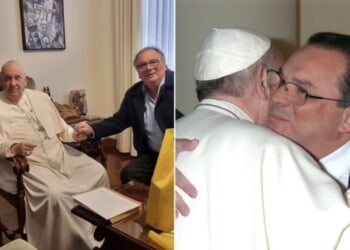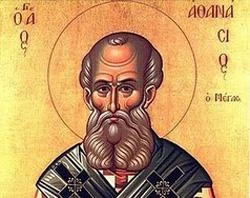As the cardinals of the Catholic Church prepare to enter the conclave on May 7, some cardinal electors have begun engaging with the press to discuss the priorities emerging among their ranks. What the cardinals have to say may offer some insight into whom they may select as the next pope. At the least, it reveals what they are thinking at this present moment.
While some cardinals have spoken with anonymity, others have spoken directly to the cameras.
Notable among these individuals is Canadian Cardinal Michael Czerny, who is so progressive that he once said the ordination of women to the priesthood “shouldn’t be off the table.” Czerny spoke with CNN in an interview Monday night and sat down with the New York Times last week. On both occasions, he spoke boldly against a group of cardinals he perceives as seeking to elect a pope who would focus on bringing unity to the Church. This, he says, would be very bad.
On CNN, Czerny said, “If you make [unity] your obsession, and you try to promote unity as your primary objective, you end up with uniformity, and this is exactly what we don’t need. We’ve spent decades now learning to get beyond uniformity to a true catholicity, a true pluralism.”
Czerny likewise denounced unity as an objective to the New York Times, saying, “[Unity] sounds really good, [but] it means reversal…. If you ask me, ‘How would you name the wrong track for the conclave?’ I would say the idea that unity is the priority…. Unity cannot be a priority issue.”
(Was Czerny listening when Christ prayed: “I pray not only for them, but also for those who will believe in me through their word, so that they may all be one, as you, Father, are in me and I in you, that they also may be in us, that the world may believe that you sent me”? Perhaps not.)
The New York Times article takes Czerny’s framing at his word, dividing the cardinals into those seeking “unity” (who are characterized as backwards conservatives) and those seeking “diversity” (who are characterized as visionary progressives). Unity, asserts the New York Times’ Jason Horowitz, is just a “seductively simple slogan” that “rings as a code word for rolling back Francis’ more inclusive vision of the Roman Catholic Church.” (RELATED: The Spectator P.M. Ep. 133: The Next Pope and the Future of the Church)
Cardinal Lazarus You Heung-sik of South Korea, who was the prefect of the Dicastery for the Clergy under Pope Francis, had a delightful response to Czerny’s opposition to unity. He told the New York Times that unity “means, for me, open the heart.” Cardinal You continued, saying that Pope Francis “taught me I must open my heart to love others.”
Cardinal Lazarus could be called “the smiling cardinal” because, well, he’s always smiling. When he gave a recent talk on the formation of priests, he asked the question: “What can we do to help priests be more joyful and happy?” Cardinal You can be seen in recent videos released by Vatican News beaming and radiating joy. Notably, Cardinal You is associated with the Focolare Movement, which has unity as one of its central charisms. Its founder, Chiara Lubich, said that “this is a Movement, whose main objectives and goals are these: God chosen in fact as an Ideal; love chosen as a lifestyle; unity which becomes the practice binding each person to God and people with one another.”
In contrast to Cardinal Czerny, Cardinal Gerhard Ludwig Müller of Germany told the New York Times that the cardinals need to “look for the unification of the church.” He stated that he had spent the morning making the case for unity at one of the general congregations (gatherings at which the cardinals hear meditations that aim to help them discern which man will best lead the church, dialogue among themselves, and make decisions regarding the governance of the Church in the absence of a pope).
Whispers of what the cardinals might be thinking also emerged from the Catholic publication The Pillar, albeit this time anonymously. The publication’s editor-in-chief, J.D. Flynn, reported on The Pillar Podcast that he had heard that “already there is a consensus emerging.” This news, he said, came from “people let’s say close to the general congregations” — read: cardinals. Flynn said, “[O]ne of the things I’ve been hearing consistently emerging is that there’s a desire really for like a 10-year papacy as the next papacy and so the guys who are being talked about … are basically guys in their late 70s, that they want sort of 10 years, that they want someone who will be pope for a decade or more, kind of bring some stability.”
Flynn further asserted, “Basically what I’m hearing is after … Francis and the sort of — I feel comfortable saying chaos and not just saying it polemically — there’s a desire for someone more inwardly focused, someone who has a sense of governance, maybe even a canonist, but especially someone who has proven experience and leadership in and around the Roman curia, you know, who is close to late 70s.”
Cardinal Pietro Parolin, who was the cardinal secretary of state under Pope Francis, would seem to be an example of a candidate with “proven experience and leadership in and around the Roman curia.” The same could be said for Cardinal Lazarus, who served as prefect of the Dicastery for the Clergy since 2021; Cardinal Peter Turkson, who has held various roles at the Vatican since 2009; Cardinal Arthur Roche, who was prefect of the Dicastery for Divine Worship and the Discipline of the Sacraments under Pope Francis; Cardinal Matteo Zuppi, who worked closely with Pope Francis in his role as president of the Italian Episcopal Conference; and Cardinal Robert Francis Prevost, who served as prefect of the Dicastery for Bishops under Pope Francis. Cardinal Luis Antonio Tagle has held various curial posts, but he was also removed from his position as president of Caritas Internationalis following an external investigation, casting doubt on his managerial prowess.
Another cardinal who has spoken with frankness is New York’s Cardinal Timothy Dolan, who said on The Today Show that he is looking for “somebody with the same style of Francis, that warmth, that heart, that smile, that goodness, that embrace, and maybe with a little bit of a blend of John Paul and Benedict when it would come to more, what would I say, more clarity in teaching, more refinement of the Church’s tradition, more digging in the treasures of the past to remind us of what Jesus expects of us now.”
As it is, the cardinals are still wearing name tags, and according to further reporting from The Pillar, are still in the stage of getting to know one another.
In the coming days, we are likely to hear more bits and pieces on what issues the cardinals are weighing most seriously.
READ MORE:
The Spectator P.M. Ep. 133: The Next Pope and the Future of the Church


![Stephen Miller Announces New Goal for ICE Mass Deportation Effort [WATCH]](https://www.right2024.com/wp-content/uploads/2025/05/Stephen-Miller-Announces-New-Goal-for-ICE-Mass-Deportation-Effort-350x250.jpg)


![Simone Biles Defends Trans Pitcher and Mocks Riley Gaines, It Doesn’t Go Well [WATCH]](https://www.right2024.com/wp-content/uploads/2025/06/Simone-Biles-Defends-Trans-Pitcher-and-Mocks-Riley-Gaines-It-350x250.jpg)

![LAPD Praises 'Peaceful' Rioters as They Set Cars on Fire and Attack Feds [WATCH]](https://www.right2024.com/wp-content/uploads/2025/06/LAPD-Praises-Peaceful-Rioters-as-They-Set-Cars-on-Fire-350x250.jpg)

![LA Protest Casualty? Dead Body Found as Riots Stretch Into Fifth Night [WATCH]](https://www.right2024.com/wp-content/uploads/2025/06/1749642627_LA-Protest-Casualty-Dead-Body-Found-as-Riots-Stretch-Into-350x250.jpg)

![Fans Shocked as Katy Perry Stops Concert After She’s Ambushed by Deranged Fan Onstage [WATCH]](https://www.right2024.com/wp-content/uploads/2025/06/Fans-Shocked-as-Katy-Perry-Stops-Concert-After-Shes-Ambushed-350x250.jpg)





